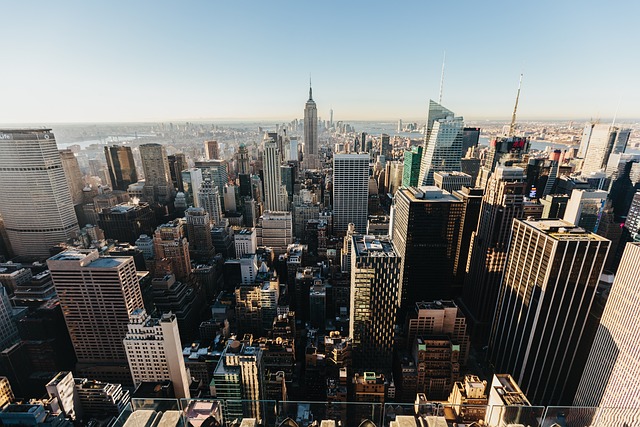In Karachi's vibrant Clifton neighborhood, construction bylaws are vital for maintaining the area's aesthetic appeal, functionality, and safety. These dynamic regulations guide developers and architects, ensuring sustainable, harmonious structures that enhance livability while preserving the area's unique character. Over time, building standards have evolved to address urbanization, infrastructure, disaster preparedness, and environmental sustainability, with strict compliance mandatory for permits and legal peace. Though challenging, these bylaws offer both benefits like structure quality and safety, and drawbacks such as planning complexities and resident friction, ultimately balancing progress and community well-being in the bustling city of Karachi.
In the vibrant city of Karachi, understanding construction bylaws is crucial for developers and residents alike. This comprehensive guide delves into the intricate world of Clifton’s construction regulations, offering a historical perspective on building practices. We explore key components of local bylaws, their impact, and challenges faced by stakeholders. By examining these aspects, we aim to provide insights that foster informed decision-making in Karachi’s ever-evolving urban landscape.
- Understanding Construction Bylaws in Clifton, Karachi
- Historical Perspective: Evolution of Building Regulations
- Key Components of Local Construction Bylaws
- Impact and Challenges for Developers and Residents
Understanding Construction Bylaws in Clifton, Karachi

In the vibrant city of Karachi, particularly within Clifton, construction bylaws play a pivotal role in shaping the urban landscape. These regulations are designed to ensure that buildings and infrastructure development aligns with the area’s aesthetic, functional, and safety standards. Understanding these bylaws is essential for developers, architects, and residents alike, as they govern everything from zoning restrictions to building codes and environmental considerations.
Clifton, known for its bustling streets and diverse community, has specific construction guidelines that reflect the area’s unique character. Developers must navigate these bylaws to create sustainable and harmonious structures that enhance the overall quality of life in Karachi. By adhering to these regulations, Clifton can maintain its vibrant tapestry while fostering responsible and innovative development.
Historical Perspective: Evolution of Building Regulations

In the historical context of Karachi, the evolution of building regulations has been a dynamic process shaped by the city’s growth and changing needs. Initially, construction bylaws in Clifton were primarily focused on ensuring structural safety and basic amenities, reflecting the city’s relatively smaller scale and simpler architectural landscape. Over time, as Karachi experienced rapid urbanisation, these bylaws underwent significant transformations to incorporate provisions for dense population density, environmental sustainability, and aesthetic considerations.
The late 20th century marked a turning point with the implementation of stricter guidelines aimed at preserving the unique architectural character of Clifton while accommodating the region’s burgeoning population. These evolving regulations not only addressed physical structures but also incorporated strategies for better infrastructure development, disaster preparedness, and energy efficiency—all vital components in shaping modern construction standards in Karachi.
Key Components of Local Construction Bylaws

In Clifton, like many urban centers, local construction bylaws play a pivotal role in shaping the built environment. These regulations are designed to ensure safety, maintain aesthetic standards, and promote sustainable development practices. Key components of these bylaws include building permits, zoning regulations, and safety standards for materials and construction methods. For instance, in Karachi, authorities enforce strict guidelines on structure height, density, and setback requirements, especially in residential areas.
Moreover, local bylaws often incorporate specific provisions for energy efficiency, green building practices, and noise pollution control. They also dictate the maintenance of public spaces and infrastructure during and after construction projects. Compliance with these rules is crucial for developers and contractors to obtain necessary permits and avoid legal repercussions.
Impact and Challenges for Developers and Residents

In Clifton, Karachi, strict construction bylaws significantly impact both developers and residents. For developers, these regulations present challenges in terms of project planning, timelines, and costs. They must adhere to specific building codes, zoning restrictions, and environmental guidelines, which can delay projects and increase expenses. However, these bylaws also ensure the quality and safety of structures, providing a robust framework for sustainable development.
Residents benefit from these stringent bylaws as they promote better infrastructure, aesthetics, and overall livability. Yet, the strictness of the rules can sometimes cause friction between developers and locals, especially regarding issues like noise pollution, construction debris management, and temporary disruptions during building processes. Balancing these challenges is crucial for the harmonious development of Clifton, ensuring that progress goes hand in hand with community well-being.
The construction bylaws in Clifton, Karachi, have evolved over time to shape the city’s skyline. By understanding these regulations, developers can navigate the challenges and opportunities presented, ensuring that projects adhere to safety standards and contribute positively to the vibrant urban landscape of Karachi. For residents, awareness of these bylaws empowers them to engage with local authorities, fostering a harmonious environment for community development and growth.
